No products in the cart.
| In Vitro Plantlets Information and Growing Instructions |
| This is an OSSI open source variety. Click for more information about open source seeds |
| This variety has a concentration of potato glycoalkaloids greater than what is generally considered safe |
Calawah was grown from seeds of potato breeder Tom Wagner’s variety ‘Curt Schilling’. Curt Schilling was selected from seeds of Solanum curtilobum, a lightly domesticated Andean pentaploid species. S. curtilobum is often grown at higher altitudes than common tetraploid potatoes and has some frost tolerance. As I understand it, the seeds were open pollinated. In this case, it appears that there was probably a chance cross to a red variety with yellow flesh, since these are not traits normally found in Solanum curtilobum. This is most likely a hybrid between S. curtilobum and a normal S. tuberosum variety.
Calawah produces heavy yields of 3 to 4 inch long, oval tubers with either white and red or yellow and red flesh. The tuber count is also quite high, usually between 40 and 50. I’d call it an all purpose type, probably leaning a bit more to the waxy end of the spectrum than starchy. When cooked, the flesh becomes uniformly pink. Sometimes there is a hint of aftertaste with this variety that I have come to identify with Solanum acaule, one of the parent species of S. curtilobum. I think that aftertaste probably indicates that the tubers have a high level of tomatine, the major glycoalkaloid of S. acaule. Calawah flowers and fruits heavily and appears to self-pollinate. The plants are tough, tolerant of poor soils and drought and resistant to most of the common potato diseases here. Calawah may be resistant to Colorado potato beetle feeding, according to reports from some people who have grown it in areas with high beetle populations.
This variety has a notably plastic phenotype. The plants and even the tubers appear quite different depending on conditions. I have seen the plants take a low growing form with tiny leaves in drought, but also very large, upright plants when grown under irrigation. The tubers also change, some years having yellow regions around the eyes and yellow flesh, but other times almost totally lacking in yellow. I have never seen another potato do this. Groping for explanations, I came across a paper (Cara 2019), that found evidence that aneuploidy can result in ongoing epigenetic changes. Aneuploids are organisms that include a partial set of chromosomes. Seed grown plants of the pentaploid species S. curtilobum, like this one, usually are aneuploid. They have a ploidy in between tetraploid and pentaploid. So, the variability seen in Calawah may be the result of an increased rate of epigenetic change.
Only logged in customers who have purchased this product may leave a review.

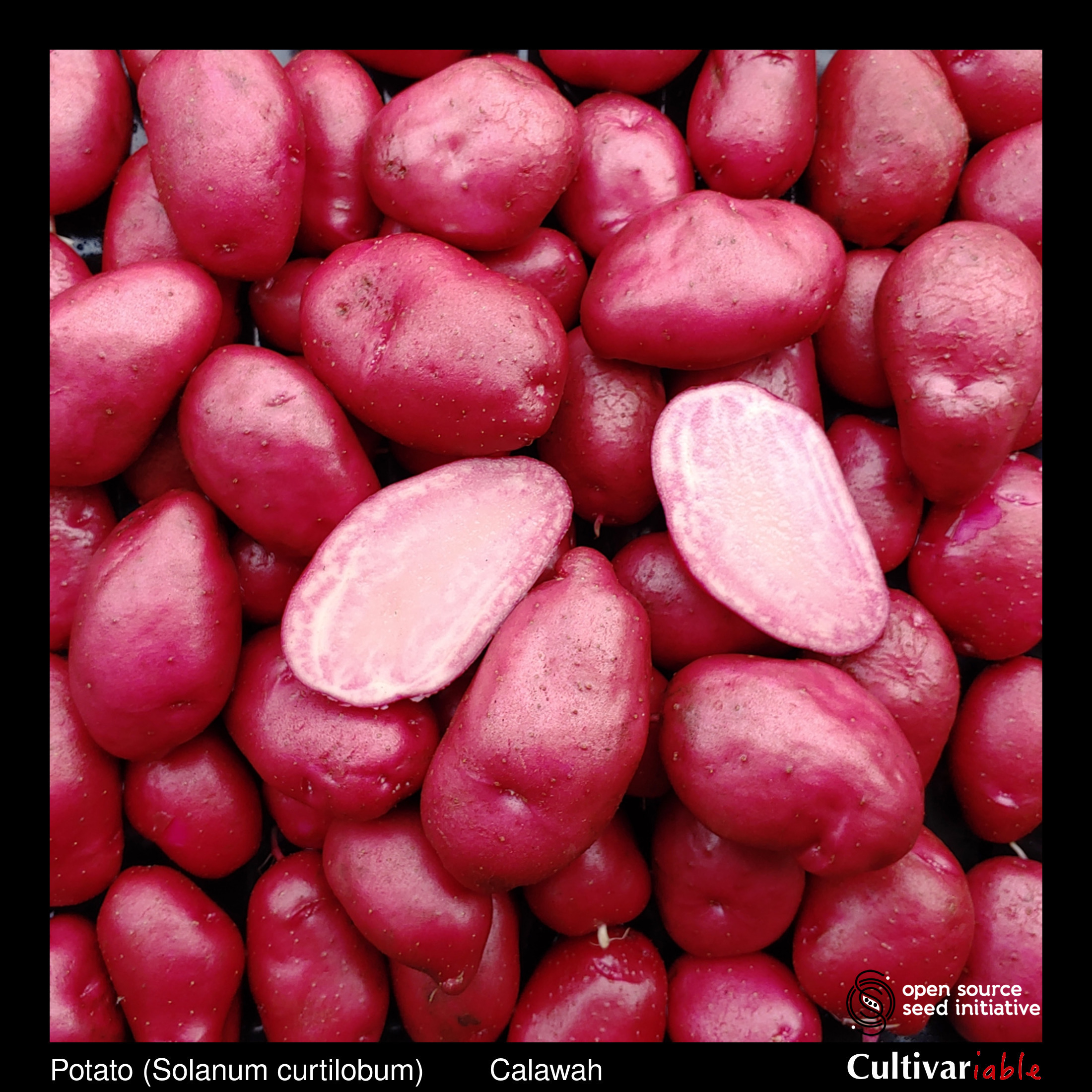
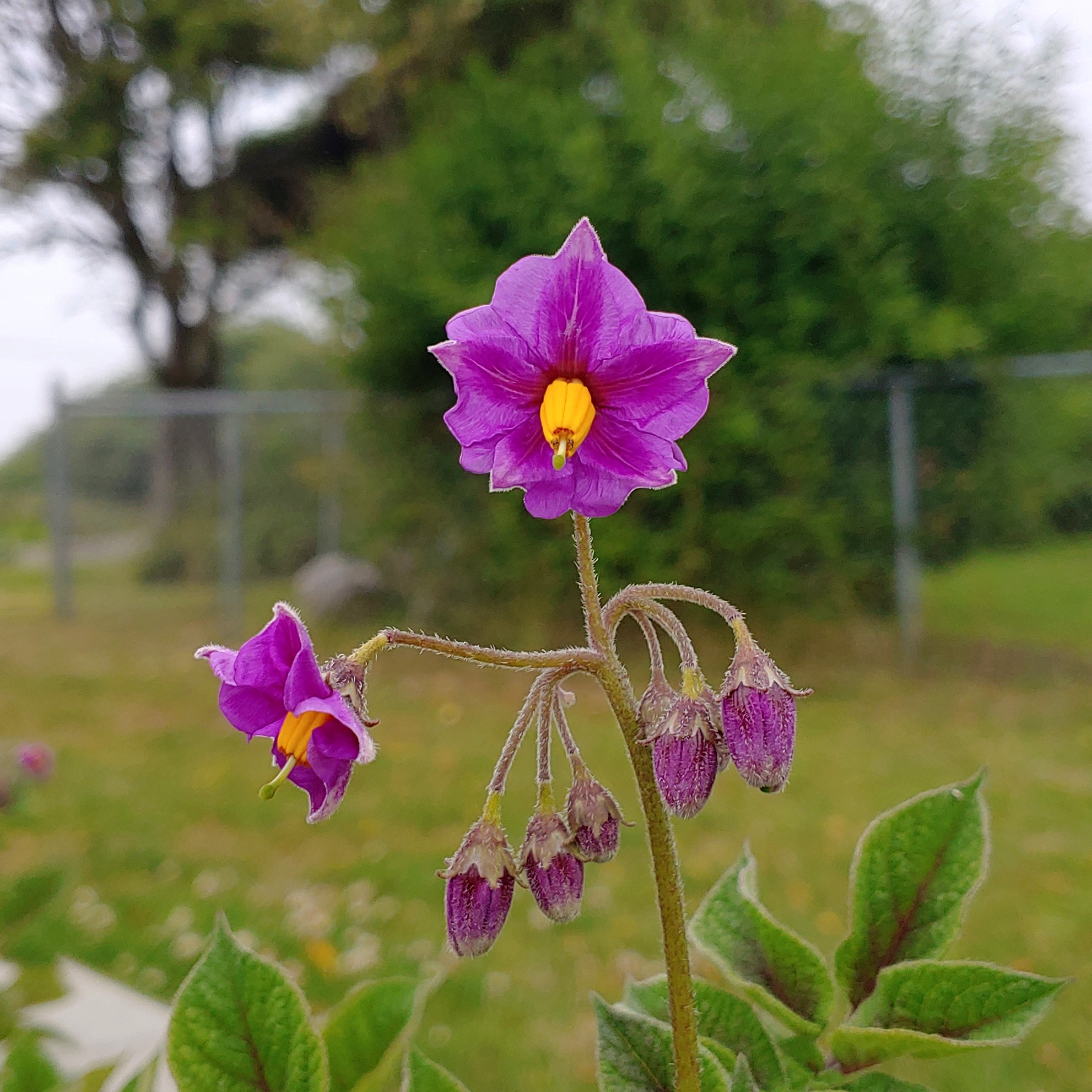
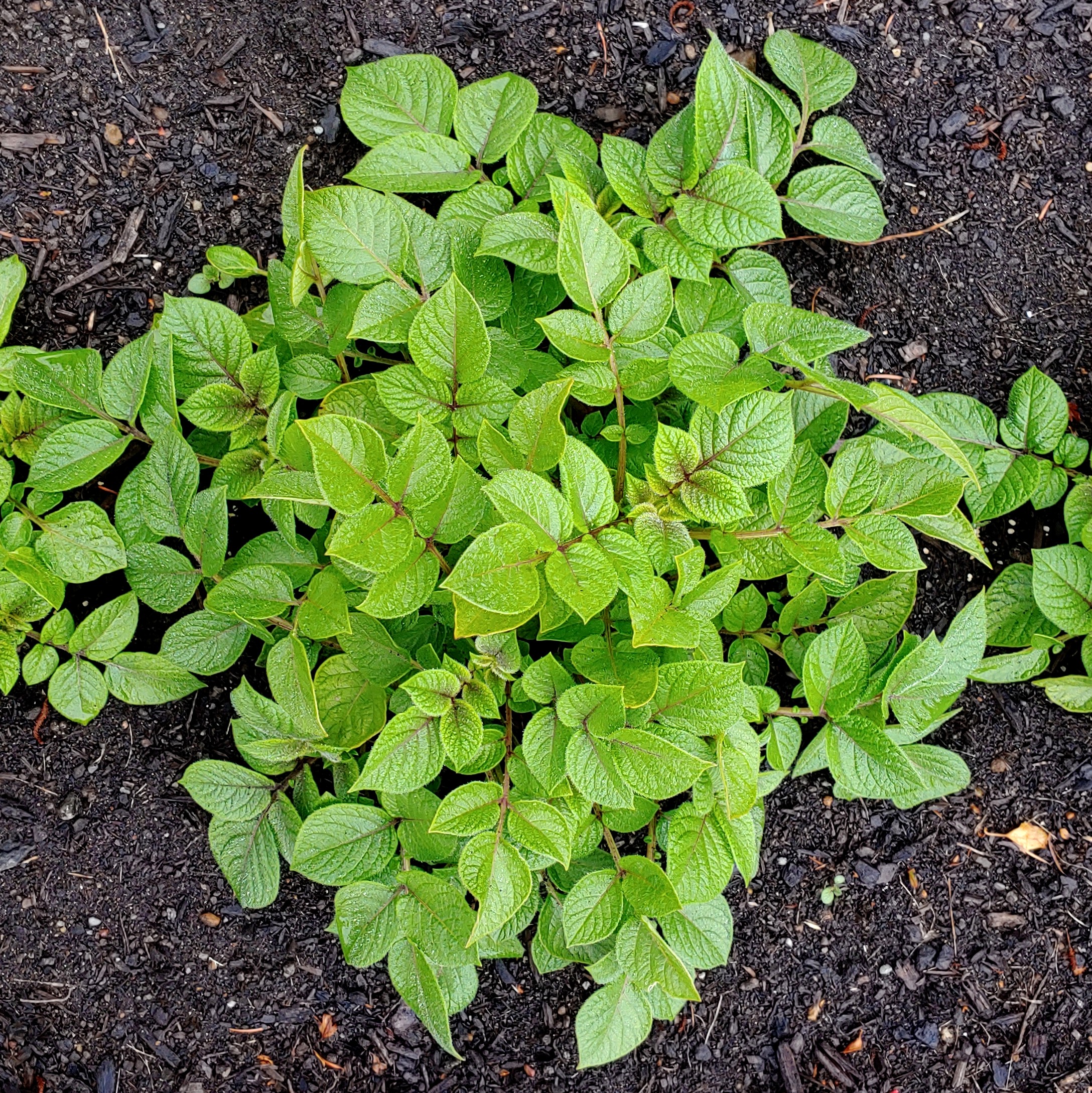
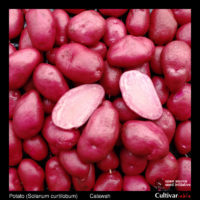
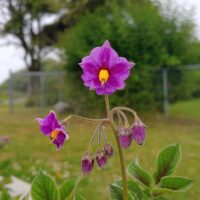
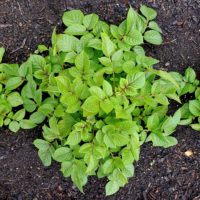
Reviews
There are no reviews yet.